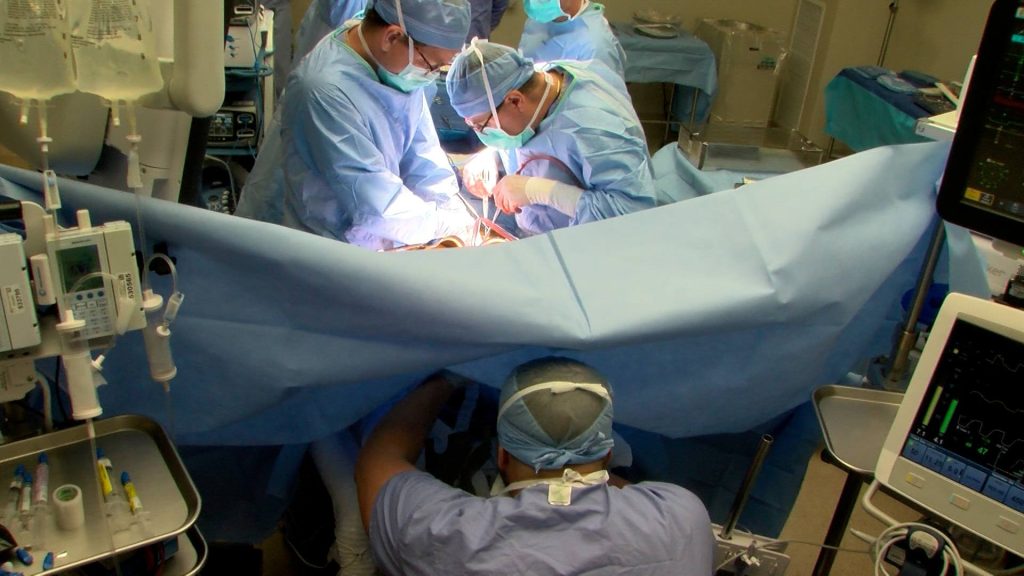-
Mayo Clinic performs its first paired living liver donation

Liver swap gives two patients a second chance at life
ROCHESTER, Minn. — Surgeons recently performed Mayo Clinic's first paired living liver donation, a significant first step in helping more people with liver failure get a lifesaving transplant.

"Liver transplantation is the only treatment option for most people with end-stage liver disease. But sadly, there are not enough donated livers available for everyone who needs one. That is why living liver donation is so important," says Timucin Taner, M.D., Ph.D., division chair of Transplant Surgery at Mayo Clinic who led the team that completed the clinic's first paired liver donation.
At any given time, there are approximately 10,000 people on the waiting list for a liver transplant in the U.S. Approximately 20% of people on the list will die waiting for a transplant. Living liver transplant offers another option, but only 6% of liver transplants performed last year came from living donors, according to the Organ Procurement and Transplantation Network.
How paired liver donation works
People can donate up to 70% of their liver because the liver has the unique ability to regenerate itself within a month. While paired living donation is commonly used for kidney transplants, it is relatively rare for liver transplants. Sometimes a potential donor who wants to give to a family member or friend isn't the best match for that recipient. In those situations, paired donation is considered. Donors and recipients are matched with other donors and recipients, creating a so-called "liver chain." In the case of Mayo Clinic's first paired liver donation, altruistic donor Michael Broeker, M.D., agreed to give a portion of his liver to a stranger, helping to kick-start the swap. He had previously donated a kidney and wanted to do more.
"I knew I wanted to be a living liver donor to help someone else. I was excited to have the opportunity to be a part of Mayo Clinic's first paired liver donation," says Dr. Broeker, of Eagan, Minnesota.

The paired liver donation surgeries were performed in August, and both donors and recipients are doing well. Only a handful of transplant centers in the U.S. offer paired liver donation because it is a major logistical undertaking. It requires a large healthcare team of nurse coordinators, physicians, social workers and others who can match patients. It also requires surgical teams to carefully coordinate.
Dr. Taner says he expects Mayo Clinic will do more paired liver donations in the future to help more patients get the transplants that they need. He encourages people who are healthy and between the ages of 18 to 60 to consider becoming a living liver donor.
"The biggest misconception about living donation is sometimes people think that they won't be able to have a normal life after the donation, which is wrong," Dr. Taner says. "It is a big operation, and it is important for patients to understand that. But once it is over, the liver regenerates to its full size, and the vast majority of people don't have long-term consequences after donation."
###
Related Content:
About Mayo Clinic
Mayo Clinic is a nonprofit organization committed to innovation in clinical practice, education and research, and providing compassion, expertise and answers to everyone who needs healing. Visit the Mayo Clinic News Network for additional Mayo Clinic news.
Media contact:
- Heather Carlson Kehren, Mayo Clinic Communications, newsbureau@mayo.edu







